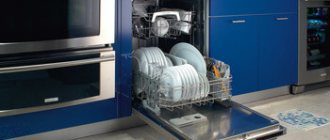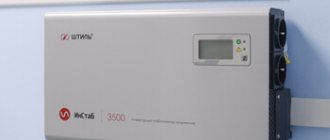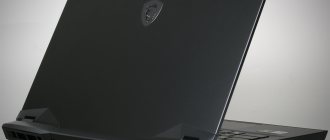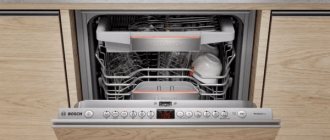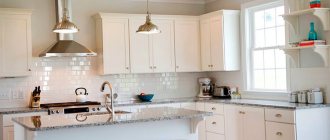Types and brief description
The devices differ in several features that you should pay attention to before purchasing.
Some boilers are not suitable for the type of power supply, others for the design.
Type of fuel
The heat source for solid fuel appliances is most often coal, wood or peat.
Fuel must be added every 4-8 hours, excluding long-burning models; adding firewood depends on the power, combustion mode and area to be heated.
Some devices are equipped with an additional thermometer, an auto-ignition system and a control panel.
Principle of fuel combustion
Pyrolysis - the basis of the device is the generation of heat by combustion of gas. Gas is extracted from wood by dry distillation from 600 to 800 degrees Celsius.
Water is heated by burning gas, which is produced by pyrolysis . This type of boiler has an increased efficiency of up to 91%. When operating such models, there is practically no emission of ash and soot.
Traditional - use heat from the combustion of filling material . Modern models use the top combustion technique, which ensures that each fuel burns alternately. Because of this, the amount of ash is reduced and efficiency increases to 80%.
Energy dependence
Volatile devices are devices that require power from the mains to regulate heating, temperature, ventilation and pump adjustment.
Non-volatile - these boilers do not require additional power sources . All control of temperature control, smoke removal, and water circulation is carried out mechanically.
What is efficiency
The efficiency factor of heating equipment is an indicator that is determined by the ratio of energy spent and useful heat entering the heating system for transportation to the room.
The efficiency percentage is calculated using the following formula:
q 1 + q 2 + q 3 + q 4 + q 5 = 100%
Explanation:
- q 1 is an indicator of the heat that was transferred to the coolant - water;
- q 2 - physical underburning - heat loss with exhaust gases;
- q 3 - chemical underburning - heat loss due to incomplete combustion of fuel;
- q 4 - heat loss during heat dissipation.
The efficiency of a solid fuel boiler will increase subject to optimized operation of the equipment.
High-quality installation, choice of raw materials, availability of ventilation and operating conditions significantly affect the efficiency indicator.
What does it depend on
Efficiency mainly depends on the loss of useful heat resulting from underburning of gases that are released during fuel combustion, as well as on the quality characteristics of the fuel and the amount of thermal energy released into the chimney.
The efficiency indicator depends on a number of factors:
- technical condition of heating equipment;
- load on the heating system;
- quality of fuel used by heating equipment.
Why is the efficiency higher in steel boilers?
In steel boilers, unlike cast iron ones, the efficiency will always be higher, since they require little energy input to heat a certain volume of water to the required temperature.
Steel is a less brittle material than cast iron, so in metal heating units it is possible to design a combustion chamber of a more complex geometric shape. Due to this, the heat exchange area increases, which leads to increased efficiency.
Steel units are characterized by fewer technological limitations. They allow you to increase efficiency by improving the design: adding convection channels, cooled grates, and increasing the reliability of the heat exchanger.
Due to high-quality insulation, steel boilers retain heat better. Two days after the unit is turned off, the temperature of its walls decreases by only 20 degrees.
How to choose and what to pay attention to
Type of fuel
If the client prefers coal when choosing fuel, then it is better to choose a boiler and steel . If firewood is used as fuel, then a cast iron model would be the best choice.
Power
This criterion determines how much area the device will be able to heat and how often it is necessary to add fuel.
NOTE!
For a large room and a two-story private house, a boiler with a capacity of 20-36 kW is suitable.
And for a small country house 14 kW is enough.
Weight and cost
The large weight and dimensions will cause inconvenience if the client does not have a special place to place the boiler.
Heavy weight also means higher installation and shipping costs . In addition, heavy boilers are much more expensive than lighter models.
Economical
The coefficient of a cast iron boiler is lower than that of a steel boiler. But a cast iron boiler takes longer to cool, thereby retaining heat for a longer time.
The time interval between fuel additions depends on the combustion time . Thus, economical cast iron models can keep warm all night.
Durability of the design
The default lifespan of equipment is about 10 years. But this depends on the careful handling of the owner and the quality of the materials from which the boiler is made.
If you choose a model with good materials, reliable assembly and properly care for the heating equipment, the device will last longer.
Safety
The equipment may become hot, creating a risk of burns.
Modern devices are equipped with a special layer of protection, and the walls of such devices do not heat up . In addition, protection is used on the door handles and a control panel is connected.
Operating rules affecting the boiler efficiency value
To ensure that heating equipment always works properly, experts recommend adhering to the basic operating rules that affect the efficiency of the boiler.
In this case, it is necessary to strictly follow these points:
- Select only the optimal modes of blowing and operation of the hood.
- Monitor combustion intensity and completeness of fuel combustion.
- Constantly monitor the amount of drift and failure.
- Assess the condition of surfaces that heat up when fuel burns.
- Clean equipment regularly.
Popular manufacturing companies
There are several reputable manufacturers that are preferred by clients:
- Stropuva - a Lithuanian brand that provides longer burning from one load of firewood. It has an interesting barrel-shaped design, which makes it possible to install the device in a small room. Lithuanian devices are quite expensive, but they are durable.
- Zota - for those who like to use firewood as fuel, the Russian brand is suitable. The devices are small in size and low in power. But they are also reliably constructed and affordable.
- Burzhuy-K is a Russian company that produces boilers independent of power supply, operating on pyrolysis. The cost of boilers varies from 40,000 to 76,000 rubles. The boilers have high power and retain heat for a long time.
How to burn properly and what kind of wood is best
The operating instructions for a wood-burning boiler determine the basic requirements for the fuel at which it produces the declared parameters. Typically, the passport indicates the length of the logs and, for some models, their diameter, depending on the size of the firebox. The optimal humidity of raw materials is also indicated in the documents and does not exceed 20%. Of the tree species, it is better to use denser wood species: ash, birch, alder. Their calorific value is on average 25% higher than that of coniferous species: spruce, pine.
Before putting the boiler into operation, it is advisable to warm up the firebox and chimney with a small, no more than 50% load of firewood. Paper, splinters, wood chips and light logs are placed on the grates. Then the whole thing is set on fire and filled with firewood up to half of the firebox so that air circulation is possible between the logs. You need to let this batch burn out with the ash pan closed and the chimney damper open. Then the ash pit and firebox are cleaned and the main batch of firewood is stacked denser than before, and the boiler is put into operation. To obtain the desired parameters, you should initially strictly follow the recommendations of the equipment manufacturer; with experience, you will understand how best to achieve the desired result.
Wood boilersBoilersSolid fuel boilers
The best classic solid fuel boilers
Kentatsu ELEGANT-03 17 kW
Kentatsu ELEGANT-03 17 kW
Stylish brown steel solid fuel boiler. Power 17 kW, suitable for heating a room of 170 sq.m.
Quite a reliable design from a Japanese manufacturer, provides uniform heating of the room.
Copes well with harsh winters.
Characteristics:
- appliance type - solid fuel boiler;
- contours - single-circuit;
- power - 17 kW;
- placement - floor;
- energy independence - yes;
- control - mechanical;
- combustion chamber - open;
- body material - cast iron;
- fuel - coal, firewood;
- pressure - 4 bar;
- dimensions - 450*947*609 mm;
- boiler weight - 166 kg;
- price - 35950 rubles.
Advantages:
- uniform heating;
- cast iron material;
- reliable design;
- easy controls;
- spacious firebox;
- interesting design.
Flaws:
- heavy weight;
- high price;
- no additional features.
Protherm Beaver 50 DLO 39 kW
Protherm Beaver 50 DLO 39 kW
Solid fuel boiler made of cast iron material 39 kW. The heat is enough to heat a private home. It has a spacious firebox for wood and coal.
Unfortunately, it does not work on other types of fuel - natural gas or pellets.
For the convenience of the client, a thermometer and pressure gauge are built in.
Characteristics:
- unit - heating boiler;
- type of fuel - wood, coal;
- number of circuits - one;
- power - 39 kW;
- energy independence - yes;
- installation - floor;
- control - mechanics;
- combustion chamber - open;
- body material - cast iron;
- Efficiency - 90.2%;
- pressure - 4 bar;
- thermometer - yes;
- dimensions - 440*935*1040 mm;
- boiler weight - 380 kg;
- 92717 rubles.
Advantages:
- quality materials;
- cast iron doors;
- high power;
- 8 heat exchanger sections;
- uniform heating.
Flaws:
- heavy weight;
- high price;
- bulky;
- the bottom of the boiler heats up;
- It is possible to use only wood and coal.
Teplodar Cooper Praktik 8
Teplodar Cooper Praktik 8
Steel solid fuel boiler from the Russian manufacturer Teplodar, with a capacity of 8 kW. Heats a small room of 80 square meters.
Suitable for a country house or garage.
Characteristics:
- unit type - solid fuel boiler;
- contours - single-circuit;
- power - 8 kW;
- area - 80 sq.m;
- installation - floor;
- energy independence - yes;
- control - mechanical;
- material - steel;
- Heating element - preinstalled;
- fuel - firewood, coal, peat briquettes;
- functions - thermometer;
- connection of external control - yes;
- boiler weight - 60 kg;
- cost - 12,460 rubles.
Advantages:
- affordable price;
- uniform heat;
- various fuels;
- compact size and light weight;
- easy control.
Flaws:
- the power is not enough to heat a two-story house;
- The housing may become hot.
Teplodar Cooper Praktik 14 14
Teplodar Cooper Praktik 14 14
Classic solid fuel boiler from the Teplodar company with a capacity of 14 kW. Suitable for heating a country house up to 140 square meters.
Installed on the floor.
Characteristics:
- appliance - solid fuel boiler;
- contours - single-circuit;
- thermal power - 14 kW;
- heating area - 140 sq.m.;
- installation - floor;
- control - mechanics;
- non-volatile - yes;
- material - steel;
- Heating element - preinstalled;
- fuel - coal, peat briquettes, firewood;
- thermometer - yes;
- dimensions - 420*655*630 mm;
- boiler weight - 68 kg;
- cost - 15,745 rubles.
Advantages:
- low price;
- compact dimensions;
- a light weight;
- quality materials;
- good heating of the room;
- spacious firebox for storing fuel.
Flaws:
- firewood burns quickly;
- before going to bed you need to add fuel.
ZOTA Box 8 8 kW
ZOTA Box 8 8 kW
Solid fuel heating unit with a power of only 8 kW. Suitable for a small room - a garage, country house or workshop.
The small appliance is equipped with a hob on which you can heat water or food.
Characteristics:
- boiler type - solid fuel;
- contours - single-circuit;
- power - 8 kW;
- placement - floor;
- energy independence - yes;
- control - mechanics;
- combustion chamber - open;
- Efficiency - 70%;
- material - steel;
- hob - yes;
- Heating element - optional;
- fuel - coal and firewood;
- thermometer - yes;
- dimensions - 380*460*630 mm;
- boiler weight - 71 kg;
- cost - 16,100 rubles.
Advantages:
- compactness;
- low cost;
- presence of a hob;
- quickly warms up a small room;
- economical fuel consumption.
Flaws:
- low power;
- at night it is necessary to throw it up.
Lemax Forward-20
Lemax Forward-20
A stylish solid fuel device with a power of 20 kW for heating a room of 200 m2. It features a spacious firebox located on the top panel.
Can be connected to a water heating system. Heats evenly and maintains temperature well.
Characteristics:
- appliance - heating boiler;
- fuel - solid: firewood, coal, coke;
- contours - single-circuit;
- power - 20 kW;
- non-volatile - yes;
- combustion chamber - open;
- Efficiency - 75%;
- control - mechanical;
- installation - floor;
- material - steel;
- thermometer - yes;
- boiler weight - 78 kg;
- fuel loading - vertical;
- cost - 19970 rubles.
Advantages:
- works on any solid fuel;
- quality steel;
- convenient top fuel loading;
- compact dimensions;
- environmental friendliness.
Flaws:
- firewood burns quickly;
- at night it is necessary to throw it up.
ZOTA Topol M 14 14 kW
ZOTA Topol M 14 14 kW
A bright solid fuel unit with a power of 14 kW for heating a room with a maximum area of 140 m2. It is possible to install a heating element to maintain the room temperature.
Characteristics:
- unit - heating boiler;
- contours - single-circuit;
- power - 14 kW;
- heated area - 140 m2;
- placement - floor;
- energy independence - yes;
- control - mechanics;
- combustion chamber - open;
- Heating element - optional;
- fuel - coal, firewood;
- thermometer - yes;
- boiler weight - 113 kg;
- cost - 14391 rubles.
Advantages:
- compact dimensions;
- sufficient power;
- the ability to connect a heating element;
- holds heat well;
- acceptable cost.
Flaws:
- firewood burns quickly;
- the walls heat up;
- no additional features.
Protherm Beaver 20 DLO 19 kW
Protherm Beaver 20 DLO 19 kW
A high-quality unit made of cast iron material with a power of 19 kW. Suitable for heating a private house with an area of 190 m2.
The heat exchanger includes 4 sections.
Characteristics:
- type of device - solid fuel boiler;
- number of circuits - one;
- power - 19 kW;
- area - 190 square meters;
- placement - floor;
- energy independence - yes;
- control - mechanical;
- material - cast iron;
- fuel - coal, firewood;
- thermometer - yes;
- dimensions - 440*935*640 mm;
- boiler weight - 230 kg;
- cost - 52,000 rubles.
Advantages:
- simple controls;
- reliable design;
- large ash pan;
- straight seams;
- good painting;
Flaws:
- high price;
- Not very roomy firebox.
Lemax Forward-12.5 13 kW
Lemax Forward-12.5 13 kW
An almost silent solid fuel unit with a power of 13 kW for heating an area of 130 m2. Compact dimensions allow the device to be installed in a small room.
The power is enough to heat a country house.
Characteristics:
- device - solid fuel;
- number of circuits - single-circuit;
- power - 13 kW;
- placement - floor;
- energy independence - yes;
- control - mechanics;
- combustion chamber - open;
- Efficiency - 75%;
- material - steel;
- thermometer - yes;
- fuel loading - vertical;
- boiler weight - 70 kg;
- cost - 14960 rubles.
Advantages:
- fast heating;
- compactness;
- reliable assembly;
- works silently;
- low cost;
- decent power.
Flaws:
- when laying coal there is a lot of dirt around;
- inconvenient to clean.
Lemax Forward-16 17 kW
Lemax Forward-16 17 kW
A variation of the previous model, but with increased power to 17 kW. It consumes fuel quite economically. Warms up a private home well.
Features reliable build quality.
It works silently.
Characteristics:
- unit - boiler;
- fuel - coal, firewood, coke;
- number of circuits - one;
- power - 17 kW;
- area - 170 m2;
- installation - floor;
- non-volatile - yes;
- control - mechanics;
- combustion chamber - open;
- Efficiency - 75%;
- thermometer - yes;
- boiler weight - 73 kg;
- price - 16,500 rubles.
Advantages:
- low noise level;
- uses fuel economically;
- environmentally friendly;
- safe;
- vertical loading of firewood;
- convenient use.
Flaws:
- non-standard chimney diameter.
Step-by-step boiler installation instructions
The selection and arrangement of equipment is not yet a guarantee of trouble-free operation of the system, because its elements still need to be installed correctly. And you should start with the arrangement of the boiler room, in which all this should be located. A short instruction in pictures will tell you what you need to pay special attention to.
Table 2. Correct step-by-step installation.
| Steps, photo | Description |
| Step 1. Arrangement of the boiler room | The boiler is installed after repairs have been completed in the room where it will be installed. It is important that: non-combustible materials are used in the finishing; the foundation for the boiler was prepared; there must be an air flow in the room; An exit for the chimney pipe must be provided in advance in the wall or ceiling. |
| Step 2. Choosing a location for the boiler | When choosing a place for installation, you need to keep in mind that there must be a minimum of 700 mm between the walls and the rear and side surfaces of the boiler body. On the front side, this distance must be at least 1250 mm (if the unit is top-loading). If loading is done from the front, you must also add the width of the door to this distance. |
| Step 3. Aligning the body position | It is very important that the position of the boiler does not deviate from the vertical, so during installation you need to use a level. Place it on the firebox with the lid folded back. |
| Step 4. Preparing components | According to the boiler passport, check its equipment, which may vary depending on the manufacturer. Purchase all other elements necessary for installation in advance in accordance with the selected scheme. |
| Step 5. Preparing tools | Naturally, you will need tools: adjustable, gas, socket and open-end wrenches, as well as screwdrivers of different sizes, a square and an angle grinder. |
| Step 6. Installing the combustion regulator | FUM tape is wound onto the regulator rod, and it is installed in its regular place. Tighten the nut, set the desired temperature and fix it in this position with a screw. |
| Step 7. Installation of the heating element thermostat | A little further than the combustion regulator there is a hole for installing the heating element regulator. If you don’t plan to install it, then simply screw a plug in there. |
| Step 8. Installation of the heating element | Next, the heating element itself is mounted - or a plug instead. |
| Step 9. Install the faucet | For ease of operation or routine maintenance of the system, taps are installed at the inlet and outlet of the coolant from the boiler. |
| Step 10. Assembling the security group | You assemble a pressure gauge, an air valve and a safety valve into one unit, which ensure the safe operation of the boiler and come with it. The group is placed in front of the shut-off valves. |
| Step 11. Pipeline connection to the boiler | To connect the supply and discharge pipelines to the boiler, you need to make rotary pipes. It is better if the connections are welded rather than detachable. |
| Step 12. Sealing the chimney landing site | To ensure that the chimney pipe fits tightly and does not allow combustion products to enter the room, its landing site and all other connections are treated with sealant. |
| Step 13. Water connection | Install a flexible tube onto the faucet installed at the very beginning, through which the hydraulic part of the boiler will be filled with water. Open all taps, raise the pressure to 1.3 atm, and check the tightness of the system. There shouldn't be any leaks anywhere. |
| Step 14. Heat the boiler | Now, in accordance with the instructions, you can load the firebox with wood and light it. |
The installation process is presented only in general terms, since each boiler model has its own nuances, and the connection diagram may be different.
Prices for angle grinders (grinders)
Angle grinders (grinders)
Video - Heating boiler connection diagram
Some tips for proper boiler operation
In order for your boiler to be as efficient as possible, it must be operated correctly. Here are the points you need to pay attention to so that the firewood burns longer:
- When igniting the fuel, the damper on the boiler must be completely open;
- The long burning mode is set only after heating to +600 degrees ;
- The coolant at the outlet must have a temperature of 65 degrees or more;
- If the boiler design does not provide for the laying of raw firewood, its humidity should not exceed 20%;
Dependence of heat production on wood type
- To avoid resin settling on the walls of the firebox and chimney, heat the boiler with hardwood firewood - acacia, birch, alder, aspen. And, by the way, the breed has a great influence on the amount of heat received;
- Do not chop the firewood - the larger the pieces, and the closer to each other they are laid in the firebox, the longer they will burn;
- To prevent logs from hanging, they should not be too long. The ideal size is the length of the combustion chamber minus 5 cm .
Advice! You should not use flammable liquids for ignition - a dry splinter will be enough for this.
Two examples of wood heating boilers
The best long-burning solid fuel boilers
Stropuva Mini S8 8 kW
Stropuva Mini S8 8 kW
Bright solid fuel boiler with a safety valve, power 8 kW. Suitable for heating a room of 80 m2. The fuel burns for up to twenty hours, the temperature is enough for the whole night.
Characteristics:
- type of device - solid fuel boiler;
- type of combustion - long;
- contours - single-circuit;
- power - 8 kW;
- area - 80 m2;
- placement - floor;
- energy independence - yes;
- control - mechanics;
- combustion chamber - open;
- fuel - firewood, wood briquettes;
- safety valve - yes;
- thermometer - yes;
- boiler weight - 145 kg;
- price - 53,000 rubles.
Advantages:
- compactness;
- long burning;
- ease of use;
- reliable handles;
- does not require power supply;
- robust design.
Flaws:
- high price;
- heavy weight;
- it is difficult to wash off carbon deposits from the cladding;
- Not very convenient for loading firewood.
ZOTA Topol-22VK 22 kW
ZOTA Topol-22VK 22 kW
A high-quality solid fuel device with a power of 22 kW, which is enough to heat an area of 220 m2. Convenient loading consists of two sections for storing firewood.
Characteristics:
- appliance - solid fuel boiler;
- contours - single-circuit;
- power - 22 kW;
- placement - floor;
- control - without control panel;
- fuel - coal, coal briquettes, firewood, wood briquettes;
- thermometer - yes;
- boiler weight - 128 kg;
- price - 36,860 rubles.
Advantages:
- various types of fuel;
- long burning;
- economical consumption;
- convenient operation;
- reliable design.
Flaws:
- heavy weight;
- no control panel.
ZOTA Topol-16VK 16 kW
ZOTA Topol-16VK 16 kW
A decent model of a solid fuel boiler with two sections for storing fuel. Designed for heating a small private house or workshop of 160 m2.
Ensures long burning of wood or coal.
Options:
- unit - heating boiler;
- fuel - coal, firewood, coal and wood briquettes;
- power - 16 kW;
- placement - floor;
- control - without control panel;
- Efficiency - 75%;
- thermometer - yes;
- boiler weight - 108 kg;
- cost - 30,100 rubles.
Advantages:
- heats up quickly;
- gives uniform heat;
- quality materials;
- long burning;
- possibility of laying briquettes;
- easy control.
Flaws:
- high price;
- heavy weight;
- no control panel.
ZOTA Topol-32VK 32 kW
ZOTA Topol-32VK 32 kW
Reliable solid fuel unit with a power of up to 32 kW. Capable of heating an area of 320 square meters. It is possible to install an additional heating element and connect external control.
Excellent for a country house, ensures long burning of fuel.
Characteristics:
- type of device - solid fuel boiler;
- number of circuits - one;
- power - 32 kW;
- area - 320 m2;
- installation - floor;
- energy independence - yes;
- control - mechanics;
- Efficiency - 75%;
- fuel - coal, coal briquettes, wood briquettes, firewood;
- thermometer - yes;
- connection of external control - yes;
- boiler weight - 143 kg;
- price - 40,370 rubles.
Advantages:
- fast heating;
- reliable assembly;
- simple controls;
- opportunity to purchase a burner;
- economical fuel consumption;
- stylish design.
Flaws:
- heavy weight;
- high price.
Stropuva S30 30 kW
Stropuva S30 30 kW
A full-fledged solid fuel boiler with a power of 30 kW for heating a room of 300 m2. Equipped with thermometer and safety valve.
Made of high quality steel, the material does not become red-hot when the boiler heats up.
The only boiler that continues burning for up to 31 hours.
Characteristics:
- appliance - solid fuel boiler;
- power - 30 kW;
- area - 300 sq.m.;
- placement - floor;
- control - mechanical;
- contours - one;
- non-volatile - yes;
- combustion chamber - open;
- Efficiency - 85%;
- material - steel;
- fuel - firewood, wood briquettes;
- thermometer - yes;
- safety valve - yes;
- boiler weight - 257;
- price - 89,800 rubles.
Advantages:
- long burning;
- uniform heat;
- fast heating;
- quality materials;
- presence of a thermometer;
- economical fuel consumption.
Flaws:
- high price;
- heavy weight;
- bulky.
Rules for choosing a heating boiler
Before you start choosing a specific heating boiler model, you need to study the criteria that you should focus on. By understanding the operating features and basic parameters of the equipment, you can choose a device that can satisfy all your needs.
First of all, consider these nuances:
- boiler type and efficiency;
- camera design;
- device power and room area;
- combustion time and supported fuel types;
- heat exchanger material;
- additional functions and protection systems.
Boilers are single-circuit and double-circuit . The first option is connected to an autonomous heating system and is intended exclusively for heating. Some models work in conjunction with a boiler.
The second option replaces the water heater and boiler, providing not only heating, but also hot water supply.
The boiler efficiency indicator, expressed in the efficiency parameter, shows how productive the device is. The higher it is, the less volume of fuel materials will be needed to heat the room
One of the main indicators of equipment is the output thermal power. This parameter must be selected based on the area that is supposed to be heated.
It is highly desirable that the model has the ability to adjust the power, allowing you to achieve the optimal comfortable temperature.
Boilers with an open chamber design take oxygen from the room and remove combustion products through the chimney. They should be installed in areas with good ventilation. Units with a closed chamber type can be placed in almost any room
The frequency of loading depends on the combustion time of the fuel in the boiler. Pyrolysis boilers and long-burning appliances retain heat the longest. The best option would be units that run not only on wood, but also on alternative fuels.
Also, when choosing, it is important to pay special attention to the heat exchanger:
Image gallery
Photo from
Heat exchanger in a heating boiler
Solid fuel boiler with steel heat exchanger
Cast iron model of heating boiler heat exchanger
Boiler with copper heat exchanger
Operational safety and equipment efficiency are enhanced by additional built-in mechanisms and functions. It’s good if the selected model has overheating protection, devices for regulating traction, measuring current pressure and temperature.
The best pyrolysis boilers
TRAYAN T15 15 kW
TRAYAN T15 15 kW
Model of a pyrolysis boiler from a Russian manufacturer using solid fuel. Made of high quality steel, the material does not heat up and is easier to clean than cast iron models.
After prolonged use, the paint may peel off.
Options:
- boiler type - solid fuel;
- type - pyrolysis;
- thermal power - 15 kW;
- heated area - 160 m2;
- installation - floor;
- energy independence - yes;
- control - mechanical;
- Efficiency - 85%;
- fuel - firewood, coal;
- boiler weight - 230 kg;
- pressure - 95%;
- price - 44370 rubles.
Advantages:
- low noise level;
- uniform heating of the room;
- heats up quickly;
- reliable assembly;
- quality material;
- good paint job.
Flaws:
- high price;
- heavy weight.
Bourgeois-K MODERN-12 12 kW
Bourgeois-K MODERN-12 12 kW
Solid fuel boiler of rich bright color, made of high quality steel. A power of 12 kW is enough to heat a room of 120 m2.
Works on wood, coal, peat briquettes.
Suitable for a country house or workshop.
Options:
- type - boiler;
- fuel - firewood, coal, wood briquettes, peat;
- number of circuits - single-circuit;
- power - 12 kW;
- heated area - 120 m2;
- combustion chamber - open;
- Efficiency - 92%;
- control - mechanical;
- installation - floor;
- thermometer, pressure gauge - yes;
- boiler weight - 220 kg;
- dimensions - 400*1070*780 mm;
- cost - 59,900 rubles.
Advantages:
- ability to use a variety of fuels;
- high efficiency;
- presence of a thermometer;
- stylish design;
- adequately warms the room;
Flaws:
- overcharge;
- heavy weight;
- inconvenient ash pit.
Bourgeois-K MODERN-24 24 kW
Bourgeois-K MODERN-24 24 kW
A solid fuel boiler from Russian manufacturers with a power of 24 kW, which is enough to heat a private country house with an area of 250 m2.
The device is installed on the floor and runs on solid fuel.
Characteristics:
- type - solid fuel boiler;
- number of circuits - single-circuit;
- thermal power - 24 kW№
- heating area - 250 m2;
- installation - floor;
- non-volatile - yes;
- control - mechanics;
- fuel - coal, firewood, pellets, wood briquettes, peat;
- maximum pressure - 4.5 bar;
- thermometer - yes;
- pressure gauge - yes;
- dimensions - 500*1180*800 mm;
- boiler weight - 310 kg;
- cost - 76,050 rubles.
Advantages:
- high power;
- convenient control;
- The ash pan is easy to clean;
- quality materials;
- reliable assembly.
Flaws:
- high price;
- heavy weight;
- bulky.
TRAYAN T20 20 kW
TRAYAN T20 20 kW
Solid fuel boiler with a capacity of 20 kW for heating private houses, workshops and other premises. It is heated with coal and wood.
Installation is carried out on the floor, on special legs.
Thick steel ensures the durability of the device.
Characteristics:
- device type - solid fuel boiler;
- contours - one;
- maximum power - 20 kW;
- area - 220 sq.m.;
- installation - floor;
- energy independence - yes;
- control - mechanics;
- combustion chamber - open;
- fuel - firewood, coal;
- functions - thermometer, pressure gauge;
- dimensions - 460*980*760 mm;
- boiler weight - 260 kg;
- price - 51990 rubles.
Advantages:
- fast heating;
- long burning of fuel;
- the manufacturer promptly responds to customer questions;
- ease of use;
- durable materials.
Flaws:
- high price;
- heavy weight;
- bulky;
- small firebox.
Conclusions and useful video on the topic
Recommendations for choosing solid fuel boilers:
Boilers operating on wood and other types of solid fuel are an excellent alternative for non-gas private homes. They are economical, autonomous, and energy independent.
Despite the characteristic shortcomings of such boilers, among the available options on the market you can find a completely decent model that fully compensates for them. The main thing is to choose a high-quality boiler with a reliable, practical design and power corresponding to the area of a particular room, as well as install it correctly.
Perhaps you managed to purchase a new model of solid fuel boiler? Please tell our readers which unit you chose? Are you satisfied with his work? Perhaps there are some nuances to using the equipment? Write your comments in the block below the article.
Number of heating circuits
The issue of hot water supply in the house must be resolved at the stage of arranging the heating system. You have two options:
- Single-circuit boiler. Equipment of this type heats the coolant only for heating residential premises. To provide your family with hot water, you need to connect an indirect boiler and two pumps to the heat generator. The coolant will be directed from the heating system to the boiler, where it can heat water for domestic purposes. Double-circuit boiler. This equipment provides a separate unit for heating water, which will be supplied to the taps in the kitchen and bathroom. Thanks to this system, you do not have to purchase a separate boiler and install equipment for hot water supply.
It would seem that the choice is in favor of a double-circuit boiler for a house of 200 square meters. meters is obvious. Firstly, it will save you from the need to purchase additional expensive equipment for hot water supply. Secondly, such a system takes up much less space than a combination of a single-circuit boiler and an indirect heating boiler.
However, not everything is so simple. It is important to understand that heating coolant and hot water for domestic use requires a lot of power and high fuel consumption. Moreover, the longer the heating line inside the house, the less economical the heating equipment will be. In small cottages, the coolant circulates relatively quickly through a closed system and does not have time to cool down.
In houses with an area of 200 sq. meters, it is preferable to use a single-circuit boiler with an additional boiler of 200-250 liters - this solution is considered the most economical and practical.
Comparison of models from different brands
Users leave reviews on purchased products. They rate products. All this valuable information is freely available, and every potential buyer can familiarize themselves with it. To make it easier to choose the best manufacturer, you can compare models with the highest ratings.
| Model name | Manufacturer | Heating element for temperature maintenance, kW | Efficiency, % | Max. thermal power (kW) | Price, rubles |
| S20 | Stropuva | 6 | 85 | 20 | 79 410 |
| Wood 20 | Galmet | 6 | 85 | 20 | 94 700 |
| Teplodar | Cooper Practice 20 | 9 | 80 | 20 | 18 890 |
The cost of boilers does not always depend on the number of additional functions; it consists of product quality, brand recognition and type of boiler.
Power calculation
When determining this parameter, experts recommend starting from the fact that heating 1 cubic meter of housing requires 41 W of thermal energy.
Let's convert the housing area into volume:
200 sq. meters * 3 meters (standard ceiling height) = 600 cubic meters. meters.
Let's calculate how much thermal energy will be needed to heat the resulting cubic meters:
600 cc meters * 41 W = 24,600 W = 24.6 kW
Thus, the minimum power of a heating boiler for a house of 200 m2 should be about 25 kW. Let's add here the inevitable heat loss and the necessary power reserve in case of severe frosts and we get the optimal figure of 30 kW. If your house is poorly insulated, then it is worth considering that the thermal energy consumption will be higher than the calculated value. Only through chimneys and the ventilation system can 25-30% of the heat leave the home.
It is important to understand that generating such a significant amount of thermal energy will be very expensive. In order not to waste money in vain, it is better to take care of high-quality thermal insulation of the premises before purchasing equipment, and also choose a heating boiler with high efficiency and cheap fuel.
Comparative table of boilers for a house 200-240 m2
| Name | Homeland of the brand | Number of circuits | Combustion chamber type | Fuel | Power | Efficiency | Price |
| Wall mounted | |||||||
| Protherm Cheetah 23 MOV | Slovakia | double-circuit | open | gas | 23 kW | 90,3 % | 58698 rubles |
| Protherm Cheetah 23 MTV | Slovakia | double-circuit | closed | gas | 23 kW | 93,2 % | 61640 rubles |
| Protherm Jaguar 24 JTV | Slovakia | double-circuit | closed | gas | 24 kW | 90,2% | 46230 rubles |
| BAXI ECO Nova 24 F | Italy | double-circuit | closed | gas | 24 kW | 93% | 43899 rubles |
| BAXI ECO-4S 24 | Italy | double-circuit | open | gas | 24 kW | 91,2% | 43899 rubles |
| BAXI ECO-4S 1.24 F | Italy | single-circuit | closed | gas | 24 kW | 92,9% | 49071 rubles |
| BAXI ECO-4S 24 F | Italy | double-circuit | closed | gas | 24 kW | 92,9% | 52470 rubles |
| BAXI LUNA-3 240i | Italy | double-circuit | open | gas | 24 kW | 91,2% | 66184 rubles |
| BAXI LUNA-3 240 Fi | Italy | double-circuit | closed | gas | 24 kW | 93 % | 73875 rubles |
| BAXI ECO Four 1.24 | Italy | single-circuit | open | gas | 24 kW | 91.2 kW | 48893 rubles |
| BAXI ECO Four 1.24 F | Italy | single-circuit | closed | gas | 24 kW | 92,9% | 55094 rubles |
| BAXI ECO Four 24 | Italy | double-circuit | open | gas | 24 kW | 91,2 % | 55809 rubles |
| BAXI ECO Four 24 F | Italy | double-circuit | closed | gas | 24 kW | 92 % | 62189 rubles |
| Vaillant turboTEC plus VUW 242/5-5 | Germany | double-circuit | closed | gas | 24 kW | 91% | 109342 rubles |
| Vaillant turboTEC plus VU INT 242/5-5 | Germany | single-circuit | closed | gas | 24 kW | 91 % | 98268 rubles |
| Vaillant eloBLOCK VE 21 | Germany | single-circuit | — | electricity | 21 kW | 99% | 72636 rubles |
| Vaillant eloBLOCK VE 24 | Germany | single-circuit | — | electricity | 24 kW | 99% | 74882 rubles |
| Protherm Skat 21 (380 V) | Slovakia | single-circuit | — | electricity | 21 kW | 99,5 % | 66983 rubles |
| Protherm Skat 24 (380 V) | Slovakia | single-circuit | — | electricity | 24 kW | 99,5 % | 68532 rubles |
| Floor-standing | |||||||
| BAXI SLIM 1.230 iN 4E | Italy | single-circuit | open | gas | 23 kW | 90,2 % | 85860 rubles |
| BAXI SLIM 1.230 i 4E | Italy | single-circuit | open | gas | 23 kW | 90,2 % | 103509 rubles |
| BAXI SLIM 1.230 FiN 4E | Italy | single-circuit | closed | gas | 23 kW | 90,2 % | 114063 rubles |
| BAXI SLIM 1.230 Fi 4E | Italy | single-circuit | closed | gas | 23 kW | 90,2 % | 131354 rubles |
| BAXI SLIM 2.230 i 4E | Italy | double-circuit | open | gas | 23 kW | 90,2 % | 164744 rubles |
| Protherm Beaver 30 DLO | Slovakia | single-circuit | open | firewood, coal | 24 kW | 90,2 % | 114375 rubles |
Is it profitable to heat a house with a coal boiler?
The use of a coal boiler is beneficial as a main and additional source of thermal energy. This is especially true for places not supplied with gas, or regions where coal remains the most affordable fuel. In the latter case, we are talking, for example, about settlements located near coal mines, where significant savings are achieved due to the low cost of delivering this energy carrier.
It should be noted that some modern coal boilers can also be heated with dry wood, which allows you to choose the most affordable type of fuel. However, it should be remembered that coal heat generators must not be heated with anything that burns, that is, garbage and so on, which is usually clearly indicated in the instructions for the equipment.
Reviews of household solid fuel boilers: advantages and disadvantages
| Advantages | Flaws |
| Cheapness and availability of both boilers and fuel, “omnivorousness” of most models. The operating costs of solid fuel boilers are also among the lowest, lower only for gas and some liquid fuel boilers | The need to organize a seasonal warehouse for fuel storage, which means additional space, effort and expense |
| Reliability and simplicity due to the simple design, in which most often there is simply nothing to break | The need for constant monitoring and management. Even long-burning boilers require regular refilling of firewood, manual ignition and constant monitoring, not to mention classic inexpensive models |
| Installation of a TT boiler does not require approval or permitting documentation, as is the case with gas or electricity | Transportation, storage and combustion of solid fuels involves increased indoor pollution and a characteristic odor, especially when burning coal. |
| Prices for the most budget wood-burning models start from 12-14 thousand rubles | According to owner reviews, the prices for more technologically advanced and automated models are quite high, paying off for at least 5 years. |
| Independence from external factors, most models are non-volatile | |
| A huge selection of models for any budget and functionality, the availability of single-circuit and double-circuit models, as well as automated boilers that practically do not require human intervention | |
| Easy to use and maintain. Heating and cleaning modern solid fuel boilers is much easier and more comfortable than older models |
Heating systems
Not only the models of heating devices differ, but also the heating systems.
Gravity system
Gravity system diagram
This is one of the simplest schemes for installing heating devices. The boiler pipes are connected to the supply and return pipelines. At the outlet of the heating device there must be a safety system, including a pressure gauge and a safety valve. Shut-off valves are not allowed between it and the device itself. For the system to work correctly, the tank is located at the top; in multi-storey buildings it should be in the attic, and in lower houses it should be in the furnace room. The main rule is that the tank is located above the heating system. A simple system requires the installation of an equally simple heating device. In this case, a classic boiler is suitable.
Compulsory system
The scheme of the forced system
is distinguished by the presence of a pump. In such a system, temperature changes may occur if the device is turned off. This phenomenon can negatively affect cast iron products. To avoid boiler breakdowns, the circuit must include a primary circuit.
The valve will be busy regulating the return temperature.


